| |
Local regulations and common
standards for playgrounds may also be applicable to barefoot trails. They require fall
protection for walking, climbing or balancing above a defined height, e.g. more than
60 cm (2 ft.) in the EU. Stations of barefoot trails will usually stay below this
limit. Otherwise
use a handrail and/or a fall-protecting underlayment like sand or fine round gravel! |
|
| |
|
enlargeable
thumbnails: |
| Tree trunks |
The trunk must be prevented from
rolling, perhaps by placing it in a bed of gravel or mounting it on crossbars. This also
protects the wood from too much moisture and retards decay. Protruding
knobs must be removed carefully. The bark will peel off after a while. Since wet wood
tends to become slippery, it may be favorable to let people walk through a bed of sand
before they step on the trunk.
|
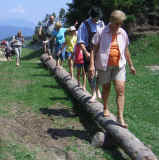 |
| |
Rising balancing beams
need strong anchoring. In this case, a rough surface can increase safety. |
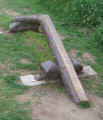  |
| |
A knobby fir trunk from the edge of the
wood provides some massage to the feet. A handrail may prevent stumbling. |
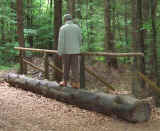  |
| |
A few steps help to enter a thick oak
tree trunk. |
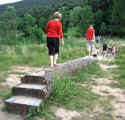 |
| |
Combination of tree trunks and stockage
is favored by visitors. |
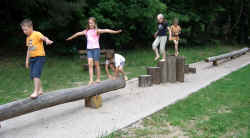 |
| |
The surrounding sand bed minimizes risk
of injury. A fall-protective material is required by European Standard for items exceeding
a height of 60 cm. |
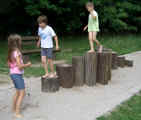 |
| |
Steps and zigzag.... |
 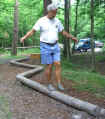 |
| |
Crossing the tree trunks requires good
fixation to prevent them from rolling. |
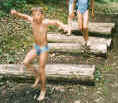 |
| |
Two parallel trunks. |
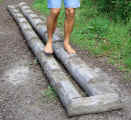 |
| Indian ladder |
Steps are cut in an
ascending tree trunk, which must be fixed against rolling. |
 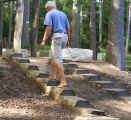 |
| |
A combined balancing
section with ascent and descent is lots of fun. |
 |
| Stem with
branches |
Part of the branches may be left to
simulate some jungle experience. Children tend to hop on the branches, which are at risk
to break, if not thick enough. Tree trunks may be carved by
artists. |
 |
| |
For security reasons,
the ends of the branches must be rounded. |
 |
| |
Trees with different
shapes can be included. |
 |
| Boulders |
Preferably typical
stones from the surrounding region are used. To prevent slipping, the surface should be
rough, but not sharp-edged. Embedding by half their diameter prevents boulders from
rolling. |
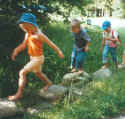 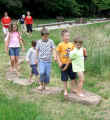 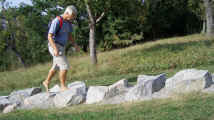 |
| Tree trunk
pieces |
Must be embedded by half
their length as well. Care for a finish to smoothen the edges! |
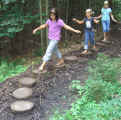 |
| Rows of pickets |
 The smaller the surface, the more demanding the balancing act is. Keep distance short enough to avoid danger! The smaller the surface, the more demanding the balancing act is. Keep distance short enough to avoid danger! |
  |
| |
The larger format requires handrails. |
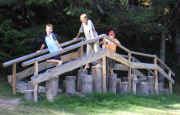 |
| Stilt walk |
The stationary stilts
need a solid fixation in the ground. |
 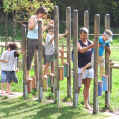 |
| Wobbling board |
This board is mounted on
two strong spiral springs and may force jumping off before the end. Therefore it should be
installed over a fall-protecting ground. |
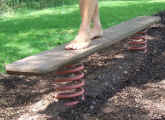 |
| Tightrope
walking |
A strong fixation to the
ground maintains the tension of the rope. |
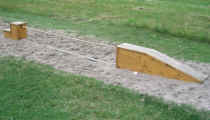 |
| A lot more
ideas.... |
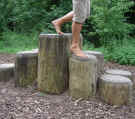  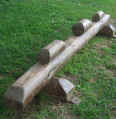
|
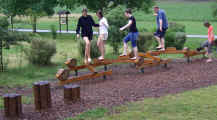 |






















 The smaller the surface, the more demanding the balancing act is. Keep distance short enough to avoid danger!
The smaller the surface, the more demanding the balancing act is. Keep distance short enough to avoid danger!









